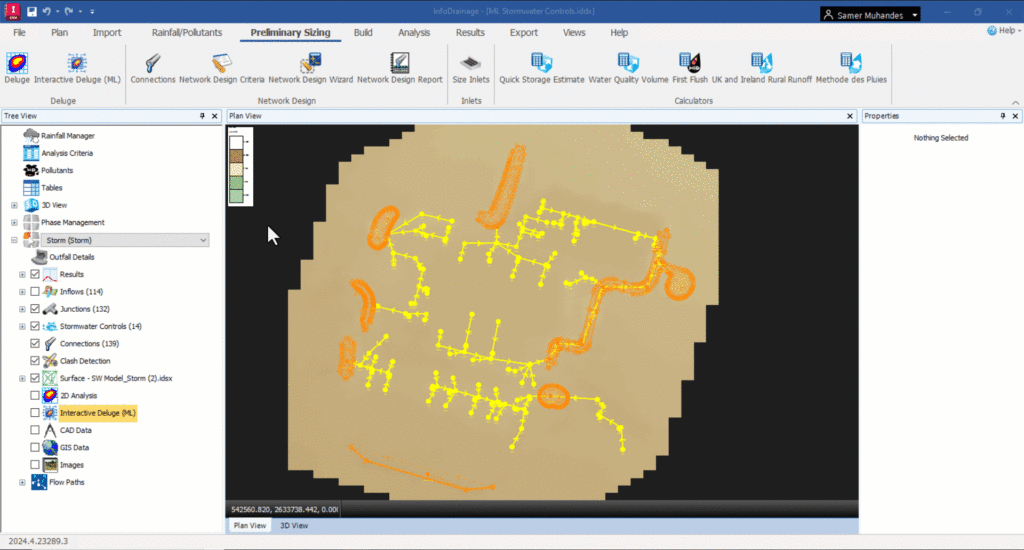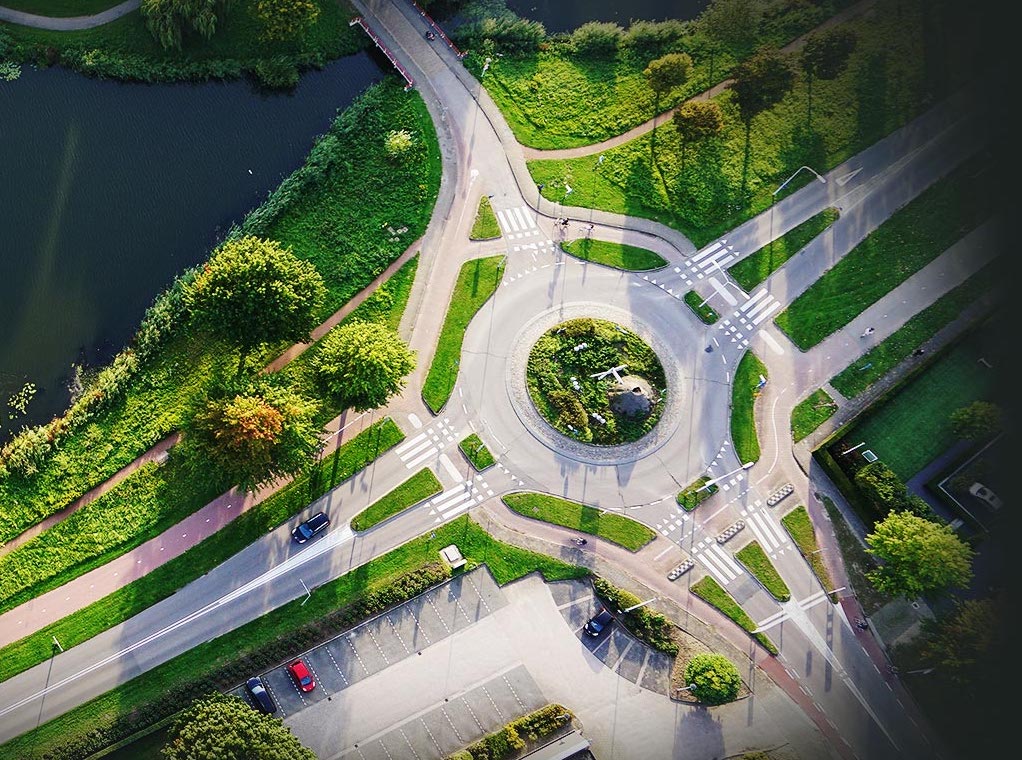& Construction

Integrated BIM tools, including Revit, AutoCAD, and Civil 3D
& Manufacturing

Professional CAD/CAM tools built on Inventor and AutoCAD
4 min read
The Autodesk InfoDrainage team has built in some fantastic new features into InfoDrainage 2024.4, including intelligent machine learning deluge, results mapping with Civil 3D, and speed and scalability improvements. In this post, we’ll walk through what these improvements mean for you, and how you can stay up to date with our product roadmap, webinars, and drainage design training.
InfoDrainage has become the latest Autodesk product to integrate AI and machine learning technologies into its workflows. While AI has certainly generated hype across a variety of fields, the Machine Learning Deluge tool delivers practical improvements to drainage design workflows.
This tool is designed to streamline your workflow by generating detailed flood maps without the need for time-consuming hydraulic simulations.
Traditional flood mapping often involves complex simulations that can be computationally intensive and time-consuming. Our new machine learning tool addresses this issue by utilizing advanced algorithms that quickly analyze water depth across a site. The result is a rapid and accurate flood map that provides essential data in a fraction of the time typically required.
In a groundbreaking move, this machine learning tool will serve as a direct replacement for traditional deluge methods. This marks a foundational step towards enabling interactive functionalities, where users will be able to move ponds and swales within the flood map and receive real-time feedback on the hydrological impacts.
The machine learning-based flood mapping tool is designed to be user-friendly, requiring minimal setup. Just input your site ground data, run the Interactive Machine Learning Deluge and the algorithm will produce a comprehensive flood map without solving one equation.
To learn more about the Interactive Deluge (ML) tool, read the announcement blog.

In our ongoing effort to optimize the workflow between InfoDrainage and Civil 3D, we are thrilled to announce an instrumental feature in InfoDrainage 2024.4: direct migration of hydraulic modelling results along with the drainage model. This enhancement significantly broadens the capabilities of InfoDrainage by allowing for a more intricate level of data interoperability between the two platforms.
Previously, while users had the ability to export the physical drainage model to Civil 3D, the hydraulic modelling results remained in isolation within InfoDrainage. This necessitated a manual process for engineers who wished to visualize and integrate hydraulic data in Civil 3D.
The new feature eradicates this inefficiency, providing a unified modelling experience. Users can now directly transfer not only the drainage system model but also the relevant hydraulic data, including hydraulic grade line and energy grade line results to Civil 3D.
By capitalizing on this direct data migration, users can enrich their Civil 3D projects with more context and analysis. You can easily plot long sections that incorporate the hydraulic grade line and energy grade line, thereby achieving a more comprehensive understanding of the drainage system’s behavior. This offers an invaluable advantage in accurately assessing, designing, and modifying drainage infrastructure.
Users can download AutoCAD version 2024.1 and Civil 3D version 2024.1 to run the result migration process.
In our continuous dedication to delivering a stable and high-performing software experience, we have conducted extensive investigations to identify and fix memory leaks within InfoDrainage and this time, the investigation was focused on the Civil 3D integration. These improvements are part of our ongoing efforts to enhance the reliability, efficiency, and user experience of our software.
Our engineering team undertook a meticulous review of the software’s architecture, employing advanced diagnostic tools to locate memory leak issues that could impact performance over extended periods of usage. This deep dive allowed us to pinpoint specific areas requiring optimization, which have been addressed in this latest release.
Memory leaks, even if minor, can cumulatively result in reduced software performance and unexpected crashes, especially in prolonged sessions. By rectifying these leaks, we have substantially improved the software’s speed, scalability, stability and efficiency, ensuring that you can operate InfoDrainage for longer durations without performance degradation.
These enhancements are integrated into the latest version of InfoDrainage, requiring no additional steps on your part. Simply update to the latest version to benefit from the enhanced stability and performance features.

Want to try out the Machine Learning tool? Download a 30-day free trial of this stormwater drainage design software – no credit card required.
This latest release underscores our commitment to continually refining InfoDrainage, integrating best-in-class capabilities to ensure you have the tools you need to produce outstanding drainage system designs.
Ready to update?
Sign up for the One Water Blog newsletter, and we'll keep you updated about our top stories, along with the best content we find online. We only send out a newsletter when we have something interesting to share.
May we collect and use your data?
Learn more about the Third Party Services we use and our Privacy Statement.May we collect and use your data to tailor your experience?
Explore the benefits of a customized experience by managing your privacy settings for this site or visit our Privacy Statement to learn more about your options.